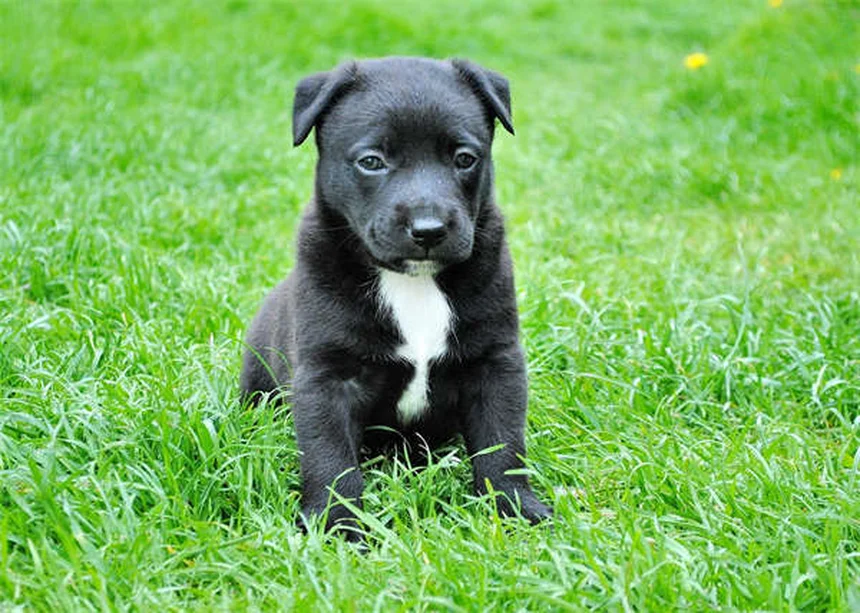Dog weight loss is a hot topic these days, and for good reason! The answer is: Yes, your pup can lose weight safely with the right approach. As a fellow dog owner who's been through this journey, I can tell you that nearly 60% of U.S. dogs are overweight - but the good news is we can fix this together!
Here's the deal: Extra weight isn't just about looks. That extra 5 pounds on your small dog? That's like you carrying around 30 pounds all day! But don't worry - I've got your back with vet-approved strategies that actually work. From measuring food properly to finding the right supplements (like Zesty Paws Weight Management Bites), we'll cover everything you need to help your furry friend slim down safely.
E.g. :7 Vet Visit Mistakes You're Probably Making (And How to Fix Them)
- 1、Is Your Pup Packing Extra Pounds?
- 2、Creating Your Dog's Weight Loss Plan
- 3、Beyond the Bowl: Other Weight Loss Strategies
- 4、Get Moving: Exercise for Weight Loss
- 5、Keeping the Weight Off for Good
- 6、Final Thoughts From One Dog Parent to Another
- 7、The Hidden Dangers of Dog Obesity
- 8、Nutrition Myths That Might Be Hurting Your Dog
- 9、Exercise Alternatives for Different Situations
- 10、The Emotional Side of Dog Weight Loss
- 11、Tracking Progress Beyond the Scale
- 12、When to Call in the Professionals
- 13、FAQs
Is Your Pup Packing Extra Pounds?
Hey there, fellow dog lover! Have you noticed your furry friend looking a bit... rounder lately? Maybe your vet dropped the "O-word" (obesity) at the last checkup, or perhaps you're struggling to buckle that harness that fit just fine last month.
Here's the scoop: Nearly 60% of American dogs are overweight or obese. That's right - more than half of our canine companions are carrying extra weight! But don't worry - I've got your back (and your dog's waistline) with some practical tips.
Why Doggy Diets Matter
Did you know that just 5 extra pounds on a small dog is like a human carrying around 30 extra pounds? That's like me walking around with a toddler strapped to my waist all day!
Extra weight isn't just about looks - it can lead to serious health issues like arthritis, diabetes, and even shorten your pup's life. But here's the good news: with the right plan, we can get your dog back in shape!
Creating Your Dog's Weight Loss Plan
Food: The Foundation of Success
Let's talk about what's in that bowl. Many of us are accidentally overfeeding our dogs - I know I was guilty of this with my Labrador, Max. Here's what works:
Vet-recommended weight loss foods are specially formulated to be lower in calories but higher in fiber. This means your dog feels full while eating fewer calories - it's like magic! My vet suggested switching Max to a weight management formula, and the difference was incredible.
| Dog Size | Extra 5 lbs Equals |
|---|---|
| Small (10 lbs) | Human carrying 30 lbs |
| Medium (30 lbs) | Human carrying 15 lbs |
| Large (70 lbs) | Human carrying 10 lbs |
 Photos provided by pixabay
Photos provided by pixabay
Measuring Matters More Than You Think
Here's a question: Do you measure your dog's food with an actual measuring cup, or do you just "eyeball" it? Be honest - no judgment here!
The truth is, that extra handful of kibble you toss in could be adding hundreds of unnecessary calories each week. I started using a proper measuring cup for Max's meals, and it made a huge difference in his weight loss journey.
Beyond the Bowl: Other Weight Loss Strategies
Treats: The Silent Saboteur
We all love spoiling our pups, but those little treats add up fast. Did you know that just three small milk bones can equal 10% of a small dog's daily calorie needs?
Instead of cutting out treats completely (because let's face it - we both enjoy the treat-giving ritual), try these alternatives:
- Carrot sticks (Max goes crazy for these!)
- Green beans (surprisingly popular with many dogs)
- Ice cubes (great for summer months)
Supplements That Actually Help
Ever heard of weight management supplements for dogs? I was skeptical too, until my vet recommended Zesty Paws Vet Strength Weight Management Bites. These clever little chews contain:
• Inulin (a fiber that helps your dog feel full)
• B-vitamins (for energy and metabolism)
• L-carnitine (helps burn fat)
Max thinks they're treats, and I love that they're supporting his weight loss goals. It's a win-win!
Get Moving: Exercise for Weight Loss
 Photos provided by pixabay
Photos provided by pixabay
Measuring Matters More Than You Think
Is your daily walk more of a "sniff-and-stop" than actual exercise? I feel you - Max used to think walks were for smelling every single blade of grass.
Here's what worked for us: We started incorporating short bursts of faster walking. I'd say "Let's go!" in an excited voice and pick up the pace for 30 seconds. Gradually, we built up to longer periods of actual walking. Now we both get better exercise!
Playtime That Burns Calories
Who says exercise has to be boring? Some of our favorite active games include:
1. The Treat Toss: Instead of handing Max treats, I toss them across the room so he has to run to get them. More movement, same reward!
2. Hide and Seek: I hide treats around the house (in easy spots at first) and let him sniff them out. Mental and physical exercise combined!
Keeping the Weight Off for Good
Routine is Your Best Friend
Dogs thrive on routine - and so do weight loss plans! Here's our daily schedule that keeps Max at his ideal weight:
• 7 AM: Morning walk (15 minutes)
• 8 AM: Measured breakfast
• 5 PM: Evening walk (20 minutes)
• 6 PM: Measured dinner
• 8 PM: Play session (10-15 minutes)
 Photos provided by pixabay
Photos provided by pixabay
Measuring Matters More Than You Think
How often do you weigh your dog? If you're like most people, the answer is "only at the vet." But here's a pro tip:
Many pet stores have scales you can use for free. I take Max every two weeks to track his progress. Seeing those numbers go down is incredibly motivating!
Final Thoughts From One Dog Parent to Another
Helping your dog lose weight isn't about deprivation - it's about creating a healthier, happier life for your best friend. I've been through this journey with Max, and I can honestly say it's brought us even closer together.
Remember: Small changes add up to big results. Whether it's switching to measured meals, adding a daily walk, or trying those weight management chews, every step counts. Your dog will thank you with more energy, better health, and hopefully many extra years of tail wags and sloppy kisses!
This sponsored article was paid for by Zesty Paws. All opinions within belong to Zesty Paws.
The Hidden Dangers of Dog Obesity
Joint Problems You Might Not See Coming
Ever notice your dog hesitating before jumping on the couch? That slight pause might be more than just caution. Extra weight puts tremendous pressure on joints - imagine carrying a backpack full of bricks all day, every day!
The cartilage in your dog's joints acts like shock absorbers. When they're carrying extra weight, these cushions wear down faster. I learned this the hard way when my neighbor's golden retriever needed knee surgery at just five years old. The vet said those extra 15 pounds were the equivalent of a human carrying around an extra 45 pounds - no wonder his joints were struggling!
Breathing Issues That Sneak Up
Here's something most dog owners don't think about: that adorable chubby belly might be making it harder for your pup to breathe. Excess fat around the chest can actually restrict lung expansion.
Short-nosed breeds like pugs and bulldogs are especially vulnerable. My cousin's pug, Bruno, would snore so loud we could hear him from the backyard! After losing just 4 pounds (which doesn't sound like much, but for a 20-pound dog that's 20% of his body weight), his breathing improved dramatically. Now he actually enjoys playing fetch instead of panting after two throws.
Nutrition Myths That Might Be Hurting Your Dog
The Grain-Free Debate
With all the hype around grain-free diets, you might think you're doing your dog a favor by switching. But here's the kicker - many grain-free foods actually contain more calories than regular kibble!
Manufacturers often replace grains with high-calorie alternatives like potatoes or peas. When I switched Max to a grain-free diet thinking it would help his weight, he actually gained 3 pounds in two months. Our vet explained that unless your dog has a specific grain allergy, there's no proven weight loss benefit to grain-free foods.
Raw Food Reality Check
Raw diets sound so natural and healthy, don't they? But have you actually calculated the calorie content of that raw chicken wing you're feeding?
Many raw feeders accidentally overfeed because they don't realize how calorie-dense raw meat can be. My friend Sarah's husky gained 8 pounds on a raw diet before she started carefully weighing each portion. Now she mixes raw with steamed vegetables to bulk up meals without adding too many calories.
Exercise Alternatives for Different Situations
Bad Weather? No Problem!
Rainy day? Too hot outside? Don't let weather derail your dog's exercise routine. Here are some indoor activities that'll get your pup moving:
• Stair climbs (great for building muscle)
• Tug-of-war (use a rope toy for joint-friendly play)
• Food puzzles (mental and physical exercise combined)
When Hurricane Sally hit last year, Max and I created an obstacle course using couch cushions and laundry baskets. He had so much fun jumping over and crawling under obstacles that he didn't even realize he was exercising!
Senior Dogs Need Movement Too
Think your old dog can't exercise? Think again! Gentle movement is actually more important for aging joints.
Swimming is fantastic for arthritic dogs - the water supports their weight while providing resistance. My 12-year-old lab mix, Lucy, could barely walk up stairs until we started weekly pool sessions. Now she does "doggy paddle" laps that keep her muscles strong without stressing her joints.
The Emotional Side of Dog Weight Loss
Breaking the Food-Love Connection
We all show love through food - it's human nature. But have you considered other ways to bond with your dog that don't involve treats?
Training sessions using praise instead of food rewards can be just as effective. I taught Max to "shake" using only verbal praise and ear scratches. Now when he wants attention, he offers his paw instead of begging for snacks. It's adorable and keeps our connection strong without extra calories.
Dealing With the "Puppy Eyes"
Those sad eyes staring at you during dinner? They could melt the North Pole! But giving in to begging creates a vicious cycle.
Here's what worked for us: I started feeding Max his dinner at the same time we ate ours. He's so focused on his own food that he barely notices our plates anymore. For particularly stubborn beggars, try having them go to their bed during human meal times - it creates clear boundaries.
Tracking Progress Beyond the Scale
Body Condition Scoring
The scale doesn't tell the whole story. Learning to assess your dog's body condition is crucial for tracking real progress.
You should be able to feel (but not see) your dog's ribs under a thin layer of fat. From above, they should have a visible waist behind the ribs. When I first learned this, I realized Max was carrying more fat than I thought - even though the scale said he was "normal" for his breed.
Energy Level Improvements
Notice your dog choosing naps over playtime? That might be the weight talking.
As Max lost weight, his energy levels skyrocketed. Where he used to sleep all afternoon, now he brings me his toy at 3 PM sharp for playtime. These non-scale victories are just as important as the numbers on the scale!
When to Call in the Professionals
Signs You Need a Veterinary Nutritionist
If your dog isn't losing weight despite your best efforts, it might be time to bring in the big guns. Veterinary nutritionists can create customized meal plans that address your dog's specific needs.
My coworker's beagle struggled with weight loss until a nutritionist discovered she had an underlying thyroid issue. With proper medication and a tailored diet, she finally started shedding pounds. Sometimes you need that expert eye to spot what's really going on.
The Role of Doggy Physical Therapy
For severely overweight dogs or those with mobility issues, canine physical therapy can be a game-changer.
Underwater treadmills, therapeutic massage, and targeted exercises help rebuild strength safely. The rehab center near us even has a "puppy Pilates" program that helps overweight dogs develop core strength. Who knew dogs could do downward dog better than most yoga instructors?
E.g. :Following a Weight Loss Plan for Dogs
FAQs
Q: How much weight should my dog lose per month?
A: The safe rate for dog weight loss is about 1-3% of their body weight per month. For a 50-pound dog, that's roughly 0.5 to 1.5 pounds monthly. Remember, slow and steady wins the race! I learned this the hard way with my Lab Max - when we tried to rush his weight loss, he just got hungry and miserable. Your vet can help determine the perfect pace for your pup's specific needs, considering their breed, age, and current health status.
Q: What's the best dog food for weight loss?
A: Look for vet-recommended weight management formulas that are high in fiber and protein but lower in calories. These special diets help your dog feel full while consuming fewer calories. When Max switched to a weight control food, the difference was amazing - he stopped begging between meals! Brands like Hill's Science Diet and Royal Canin make excellent options, but always consult your vet first. They might recommend prescription food if your dog has other health issues.
Q: Can treats be part of a dog's weight loss plan?
A: Absolutely! But we need to get creative. Instead of high-calorie store-bought treats, try veggies like carrots or green beans. Max goes crazy for frozen green beans! If you do use regular treats, make sure to count them as part of your dog's daily calorie allowance. A great trick I learned: break treats into tiny pieces - your dog won't notice the size difference but you'll cut calories in half!
Q: How much exercise does my overweight dog need?
A: Start slow and gradually increase activity. For most dogs, 30-60 minutes of exercise daily is ideal for weight loss. But remember, a 10-minute walk might be plenty for an obese pug, while a young Labrador might need much more. When Max was overweight, we began with short, frequent walks and built up to longer sessions. Swimming is another fantastic low-impact option for joint-friendly exercise!
Q: Are weight loss supplements safe for dogs?
A: Some supplements like Zesty Paws Weight Management Bites can be helpful when used alongside diet and exercise. These vet-formulated chews contain ingredients like inulin (for fullness) and L-carnitine (for fat burning). But always check with your vet first - they'll know what's safe and appropriate for your dog's specific situation. Max takes these supplements daily and thinks they're treats - total win-win!


